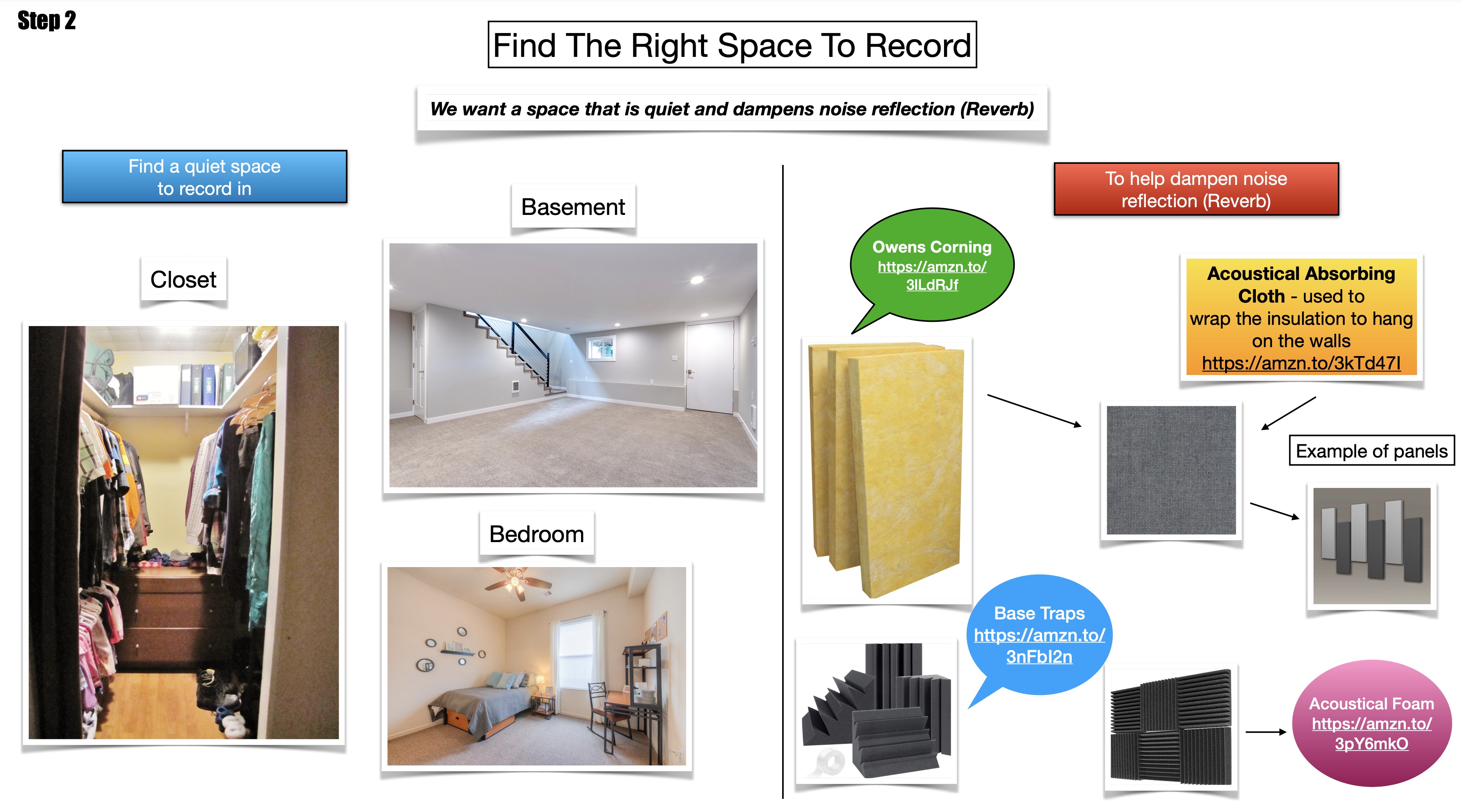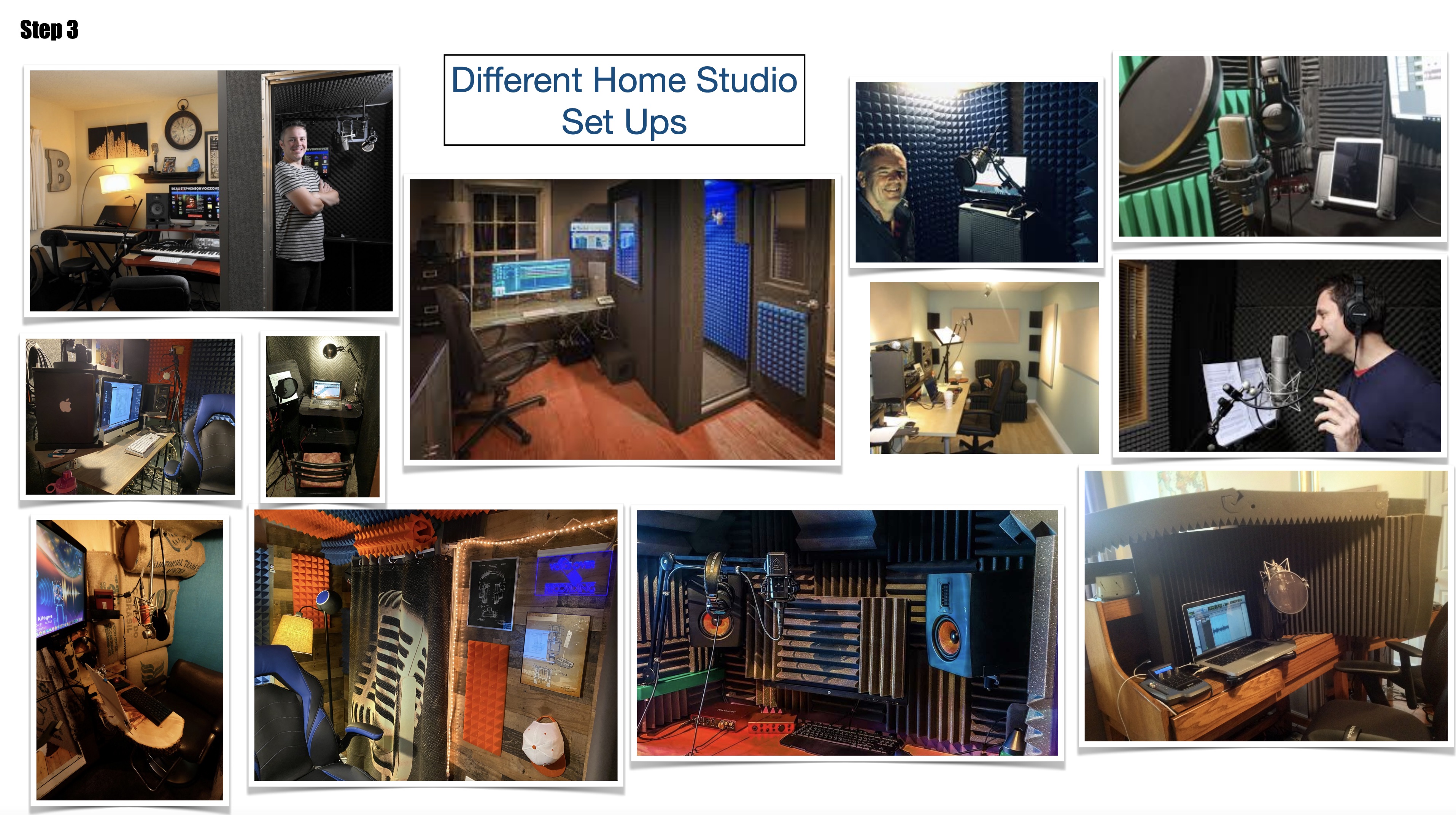How To Soundproof A Room For Voice Recording
Nov 03, 2023
How To Soundproof A Room For Voice Recording (Equipment Included)
Tips, Tricks, And Acoustic Wisdom When Learning How To Soundproof A Room
In the booming universe of voice recording, silence isn’t just golden—it’s a career imperative. Whether you’re an aspiring voice actor keen to break into the industry or a seasoned pro looking to refine your craft, a soundproof room is indispensable.
Not only does a well-insulated space allow you to focus better, but it also ensures that your recording is free of background noises—airplanes roaring overhead, neighbors talking loudly, or even the distant murmur of a television. The impact of these distractions can range from annoying to catastrophic when you’re trying to produce a professional-sounding piece of audio.
In a field where tiny details can make or break your performance, having a soundproof room isn’t a luxury. In fact, it’s a must-have as a voice actor since a well-soundproofed room gives you an upper edge by providing a controlled environment for your voice to shine.

Here’s what you need to know about how to soundproof a room for voice recording.
Understanding Soundproofing Isn’t Just About Noise Reduction
What comes to mind when you hear the term “soundproofing”? You might conjure images of thick walls, sealed doors, and perhaps even an aura of perfect silence. While these are accurate to some degree, soundproofing extends beyond merely lowering the volume of external noise that creeps into your recording room.
So, what is soundproofing? Soundproofing is a technical endeavor that involves blocking external noises from entering your space and preventing internal sounds from escaping. It’s like a two-way street: you want to keep the noise out and contain your vocal projections within the room when setting up the perfect recording studio.
The Battle Of Quietness: Soundproof Vs. Sound Absorption
So, if you’re in the quest for a quieter space, should you opt for soundproofing or sound absorption? The answer lies in your specific needs. Soundproofing aims to block noise from entering or leaving a room, making it a wise choice for those living in noisy neighborhoods or sharing their homes. If you’re part of a bustling household or positioned close to a busy road, soundproofing a room can be your knight in shining armor.
On the other hand, sound absorption focuses on improving the internal acoustics of a room. It absorbs the sounds within the space, reducing echoes and reverberations that could compromise the quality of your recordings. If your voice bounces off the walls when you’re recording, making you sound like you’re in a cavern, then sound absorption can rescue your audio quality.
In an ideal world, your room would benefit from both soundproofing and sound absorption, creating a sanctuary of optimal acoustics. Each contributes in its own way to achieve a quieter space, letting you record with peace of mind and high fidelity. When you thoughtfully implement both, you can ensure that your voice recordings are not just excellent but exemplary, impressing even the high standards of professional casting directors.

The Nitty-Gritty Science Behind Soundproofing
Before diving into the mechanics of how to soundproof a room, let’s explore the science of sound itself. Sound travels in waves through air, solid materials, and even water. When someone speaks or a car drives by, they create vibrations that move through the air as sound waves. These waves can penetrate walls, floors, and ceilings, disrupting your peace or, worse, the quality of your voice recordings.
Now, onto the heavy stuff—fundamental principles like mass, damping, and decoupling, which form the backbone of soundproofing.
- Mass
The heavier and denser a material, the less sound it lets through. Simply put, more mass equals less noise. This principle is behind using extra layers of drywall or plywood to soundproof a room. - Damping
This is about reducing the vibrational energy of sound waves as they pass through a material. Special damping compounds can be applied between layers of drywall to achieve this effect. - Decoupling
This involves separating layers of material to prevent the transmission of sound vibrations. Decoupling techniques often involve creating an air gap between wall layers or using specialized clips and brackets to attach drywall.
Understanding these principles will guide you in selecting the correct methods and materials for your soundproofing project.
How To Soundproof A Wall
Given our understanding of how sound waves operate, it’s evident that adding mass is an excellent place to start. A simple yet effective way is to attach an extra layer of drywall or plywood to your existing walls.
But don’t stop there; remember damping? Applying a damping compound between these layers can dramatically enhance your wall’s sound-blocking capabilities. These compounds are designed to convert sound energy into heat energy, effectively “swallowing” the sound.
If you’re looking for a more advanced solution, consider decoupling techniques. This involves constructing a new frame alongside your existing wall and hanging drywall. By doing this, you create an air gap that reduces the passage of sound waves.
Insulate For Silence With Soundproof Insulation
Insulation isn’t just for keeping your home warm in the winter or cool in the summer. Soundproof insulation provides an additional layer of mass and dampens the sound that might otherwise penetrate your walls. Materials like fiberglass and mineral wool are often recommended for their excellent soundproofing properties.
How does soundproof insulation differ from standard insulation? While both types provide some sound deadening, soundproof insulation is explicitly designed to block or absorb sound waves. They’re typically denser and may have additional features like adhesive backings or special facings to further dampen sound.
Don’t Overlook Your Floors Or Ceilings When Soundproofing
Last but certainly not least, your floors and ceilings deserve some attention, too. When soundproofing a room for voice recording, you aim for a comprehensive approach that seals off all potential routes for sound leakage.
For floors, materials like mass-loaded vinyl can work wonders. This thin yet dense material can be laid under your regular flooring, providing an extra barrier against sound transmission. Acoustic underlayment products explicitly designed for hardwood or laminate floors are also available.
Ceilings can be treated similarly to walls, employing adding mass and damping techniques. Acoustic ceiling tiles offer a convenient solution without requiring significant construction work. These tiles are often made from sound-absorbing materials like cork or foam and can be easily installed as a secondary layer beneath your existing ceiling.
When piecing together a space for professional-grade voice recording, every element counts. From understanding the science behind soundproofing to insulating for silence, your goal is to create an environment where your voice—and only your voice—captures the spotlight. This isn’t just a superficial makeover of your space; it’s a strategic maneuver aimed at technical perfection in your craft. In fact, the right studio space can enhance your voiceover equipment.
How Much Does It Cost To Soundproof A Room?
Ah, the all-important question: How much does it cost to soundproof a room? It’s essential to account for various expenses, including materials, labor, and any professional consultation you might require.
- Materials
Depending on your choice of soundproofing methods and materials, you could be looking at various costs. Adding a layer of drywall might cost you around $1.50 to $3.00 per square foot. Damping compounds and soundproof insulation can add to the expense. - Labor
Unless you’re a seasoned DIYer, you might need to hire professionals. Depending on the job's complexity, this could run you anywhere from $300 to several thousand dollars. - Consultation
A professional consultation can provide invaluable advice if you’re serious about achieving the best possible acoustics. However, these services are not cheap and could cost a couple hundred dollars. - Budgeting Tips
Stretching your dollar is possible even in a project as technical as this. You may discover cost-effective options at local hardware stores or get inspired by creative solutions shared on online forums.
Soundproofing a room for voice recording is an investment, but it pays off in the long run by elevating the quality of your work. Whether you’re a voice actor, a musician, or simply someone who values peace and quiet, you now have the blueprint to achieve a new level of silence and acoustic quality in your space.

How To Soundproof A Room For Cheap
Entering the world of voice recording doesn’t mean you have to splurge to create a soundproof environment right away. Several wallet-friendly alternatives can significantly improve the acoustic quality of your space without breaking the bank.
Recycle and Repurpose
A surprising amount of household items can serve as makeshift soundproofing materials. Old mattresses, blankets, and even heavy curtains can be arranged to minimize noise intrusion. Placing these items along walls or hanging them from the ceiling can serve as a temporary sound barrier.
DIY Door Sweeps
Gaps under doors can be major culprits for sound leakage. A quick fix is to create a DIY door sweep using a rolled-up towel or rug, which you can secure with a few pieces of tape. While not a permanent solution, it can effectively minimize sound transfer.
Egg Carton Acoustics
Egg cartons are often cited as an inexpensive, sound-absorbing material. Although not as effective as professional acoustic foam, arranging egg cartons along the walls can make a small difference in room soundproofing.
Thrift Store Hunts
Thrift stores can be a goldmine for soundproofing materials at a fraction of the price. Look for heavy drapes, rugs, and even foam mats that you can repurpose for your room.
Online Forums and Marketplaces
Websites like Craigslist or local online marketplaces often have people giving away items you can use for soundproofing, like foam, furniture, or textiles. Just ensure that these items are clean and in decent condition before bringing them into your workspace.
Wall of Books
If you own a book collection, consider arranging it against a noisy wall. Books can act as somewhat effective sound barriers due to their density.

Adopting some of these inexpensive strategies will help you take critical first steps in your voice-acting journey. Each small improvement you make can lead to significant gains in sound quality. And as you progress in your career, you’ll have the financial leeway to invest in more professional solutions for room soundproofing.
Your Ultimate Guide To Soundproofing Room Best Practices
Congratulations, you’re nearing the finish line of your soundproofing project! While you’ve gained ample knowledge on how to soundproof a room for voice recording, it’s crucial to organize this information into a tangible plan of action.
- Assess Your Space: Before doing anything, measure your room and identify the primary noise sources.
- Choose Your Method: Based on your needs, decide between soundproofing, sound absorption, or sound deadening.
- Select Materials: Browse through soundproofing materials like drywall or soundproof insulation.
- Get to Work: Whether DIY or hiring professionals, begin the installation process.
- Test and Tweak: After completing the installation, test the room’s acoustics and make necessary adjustments.
Your Newfound Sanctuary Of Quiet Is Ready
By now, your room should be a haven of silence and quality acoustics, a space where every voice recording is as pure as it gets. Soundproofing has many benefits, especially for professionals in the voice recording field. If you’ve found this guide helpful and are passionate about elevating your voice-over career, check out A VO’s Journey for more insights, tips, and professional guidance. Your journey toward impeccable sound quality has just begun, and A VO’s Journey is here to help you.







